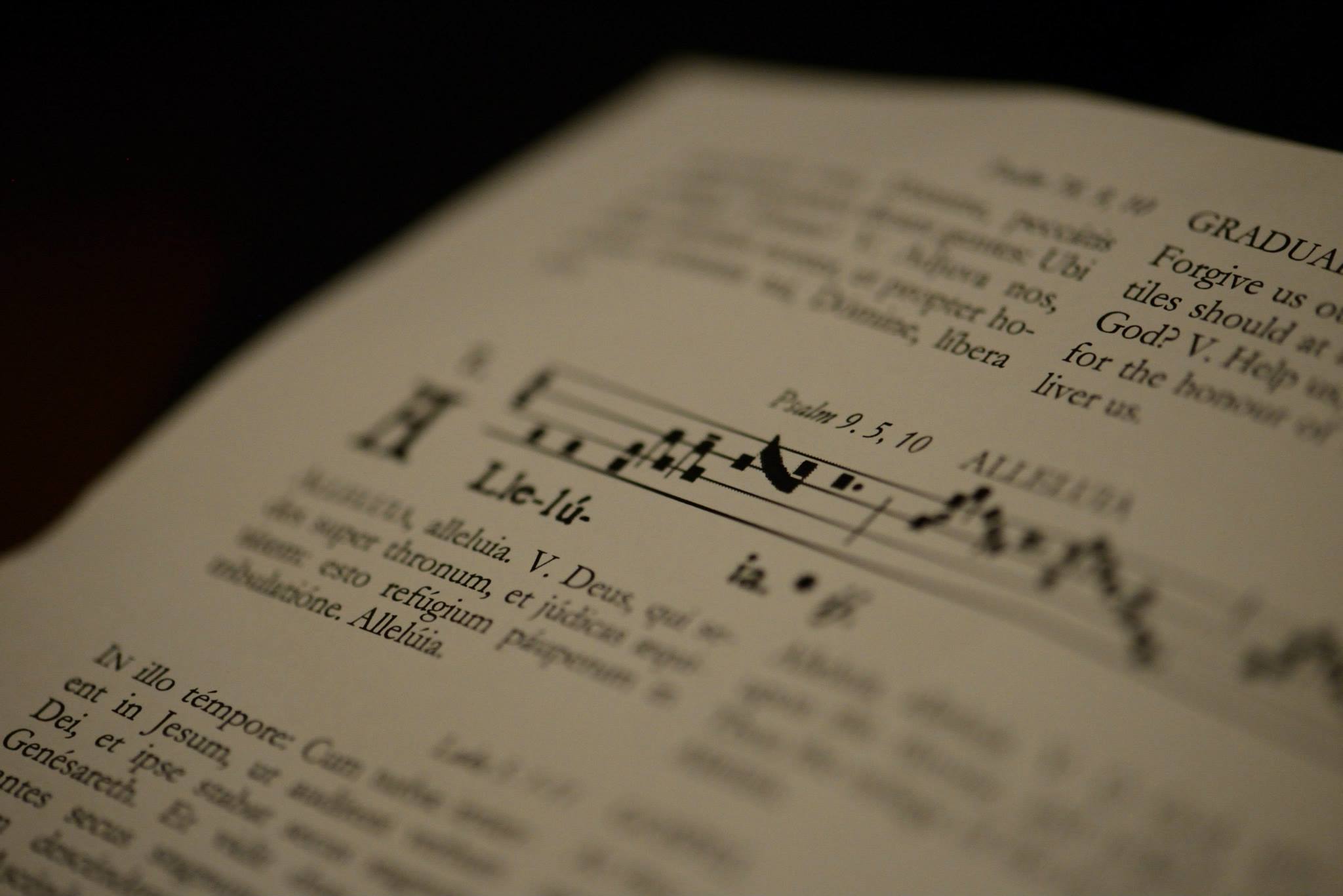
This is a description of the Traditional Latin Mass Parish Gregorian Chant notation, so that anyone will be able to read the notation and sing it.
Chant is written in neumes, which are notes sung on a single syllable.
Gregorian Chant has no meter at all. vertical lines separate musical phrases and allow a pause for taking a breath, like
Chant is not in a major key or a minor key, but in modes (though there are some modes which can sound like a modern scale).
Chant is written on a 4-line staff, instead of 5 lines as music is written on now.
![]() marks where Do or C is on the staff. Here, it is on the third line from the bottom, so the lines would go F-A-C-E.
marks where Do or C is on the staff. Here, it is on the third line from the bottom, so the lines would go F-A-C-E.
![]() would mean that Do is on the top line, so the notes on the lines would be D-F-A-C.
would mean that Do is on the top line, so the notes on the lines would be D-F-A-C.
![]() is a Fah Clef, and indicates where fah is on the staff. Here, Do would be on the bottom space.
is a Fah Clef, and indicates where fah is on the staff. Here, Do would be on the bottom space.
The Neumes
Chant notation is on the left. The modern equivalent is on the right.
| Punctum This is just a single note |
 |
|
| Virga This is the same as a punctum. |
 |
Podatus (pes) When one note is written above another note like this, the bottom note is sung first, and then the note above it. |
 |
 |
Clivis (flexa) When the higher note comes first, it is written like this. |
 |
Scandicus Three or more notes going upward. |
 |
 |
Climacus Three or more notes going downwards. |
 |
 |
Torculus (pes flexus ) Three notes that go up and then back down. |
 |
 |
Porrectus (flexus resupinus) A high note, a low note, and a high note. The line starts at the first note and goes down to the middle note. |
 |
 |
Scandicus flexus Four notes, going up and then dropping down. |
 |
 |
Porrectus flexus A porrectus with a low note on the end. |
 |
 |
Climacus resupinus The opposite of a scandicus flexus. |
 |
 |
Torculus resupinus Low-up-down-up. |
 |
| Pes subbipunctus One note up and two notes down. |
 |
 |
Virga subtripunctis Four notes in a row, going downwards. |
 |
| Virga praetripunctis Four notes in a row, going up. |
 |
Liquescent Neumes
These are other ways of showing that a note is held: One is by putting a dot (punctum-mora)after the note. The second way of showing that a note is held is by having more than one of the same note in a row on the same syllable. A horizontal line (episema) above a neume means to hold the note, or slow down like rit. in modern music. A vertical line (episema) written under a note means it has a slight emphasis like an accent mark, or divides up groups of notes. There is one accidental that may be used in Chant notation, it is the B-flat At the end of a line of chant, a little, skinny note (custos) is written to show what note is coming up next in the following line. |







 .
.